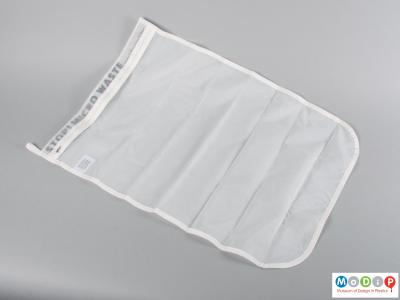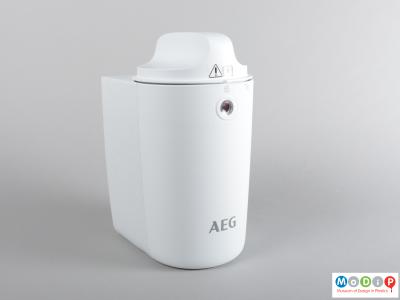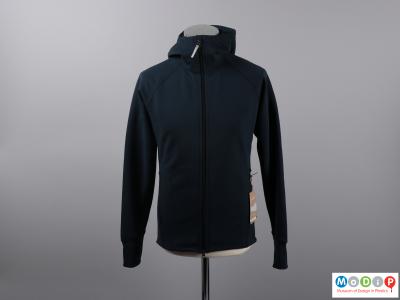Microfibres, those under 5mm, shed from all fabrics during wear, use, and especially during the laundry process. These fibres are released from both natural materials as well as synthetics such as polyester and nylon or polyamide. These tiny fibres that shed from the synthetic textiles are one of the biggest sources of microplastic pollution in the oceans.
The design of the Cora Ball (1) is based on coral, using its tentacles covered in loops and hooks to catch small fibres that float in the water of a washing machine. Alternatively, the Guppyfriend (2) contains the fibres its fine mesh as well as helping to reduce the number of fibres released from the clothing as the soft surface causes less abrasions.
The FiberCatcher filter (3) fits into the detergent drawer of specifically designed washing machines where the used water passes through during selected cycles. Once the filter is full and has dried out it can be returned to Grundig to be recycled. The externally mounted AEG filter (4) has a mesh cartridge inside, which needs to be cleaned once a week. The fibres removed from the cartridge should be disposed of in the normal rubbish. The filter cartridge need to be replaced approximately every 6 months it can the be recycled as long as it is clean. The PlanetCare external microfibre filter (5) has reusable cartridges that are replaced once they are full. They are then returned the company who will disassemble the cartridge and remove the filtering medium with the fibres. This is done in a controlled environment, ensuring that caught fibres do not pollute water or the environment. At the time of acquisition (2023), the filter medium is stored by PlanetCare until there is sufficient quantity to reuse or recycle.
The most efficient solution to reduce the microplastics we generate from our clothing is to start with the garments themselves. Both the Evolution Polartec Power Air Fleece (6) and the Mono Air Houdi (7) uses Polartec’s new revolutionary knit construction that encapsulates air to retain exceptional warmth and produce five times less microfibre shedding. This new fabric construction encases internal yarns, creating individual air pockets that capture body warmth. The surrounding knit casing serves as a supporting barrier, preventing loose microfibers from shedding.







